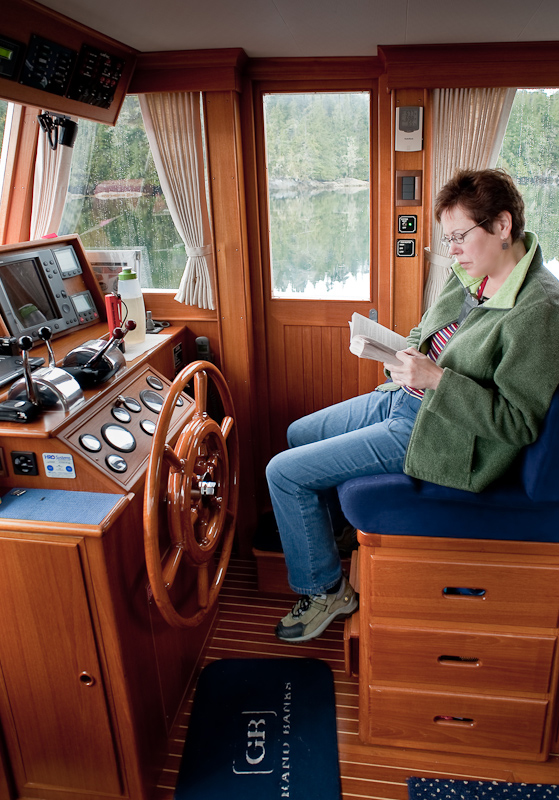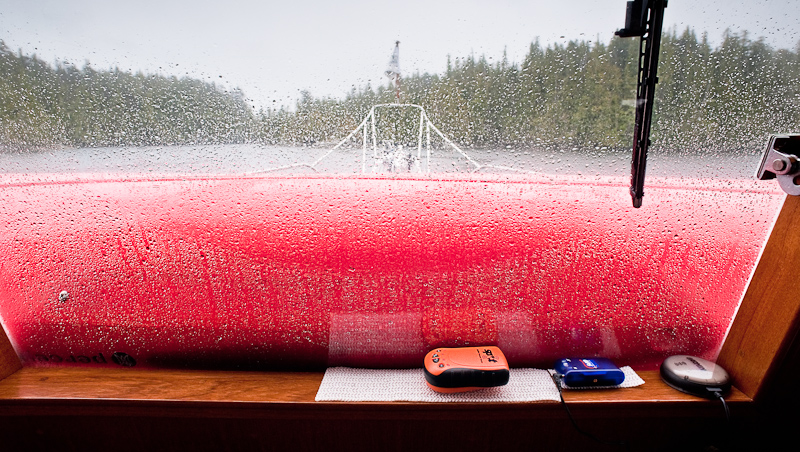Murray Labyrinth
/The morning started as usual. Listen to the weather report, make breakfast and then plan the day. With breakfast complete, showers behind us and looking forward to a great day exploring Murray Labyrinth, I was standing at the helm when I looked down at the AC panel to see how the charging of the batteries was progressing. At that moment, the voltage meter and the amp meter started to fluctuate wildly.
I immediately shut down the generator. OMG, what is going on? My first thought was that since the inverter and the refrigeration system were the only two AC power systems that were running, one of them must be having a problem.
Given the dramatic nature of the power fluctuations, I placed a call to our charter company's (Northwest Explorations) president, Brian Pemberton, to report the problem and get some considered advice before I started troubleshooting.
It's these circumstatnces when a satellite phone becomes a vital piece of safety equipment in this part of the world. There is no cell coverage, so your only choice is to rely on satellite communication. If we did not have this option, I would troubleshoot the problem on my own. However, my hope is that someone on the other end of the phone has seen this before, and that knowledge will expedite the process of resolving the problem.
Brian was a great help, but after two restarts of the generator produced the same or worse results, the volt meter and amp meter both went to zero. The generator continued to run but produced no AC power.
By the afternoon and after exhausting all possible work-a-rounds, our plan then became to arrange for a mechanic to meet us back in Port McNeill. Given the tides, the gale warnings on the Strait, and the distance back to port, we would have to wait till tomorrow morning before departing for Port McNeill. Karen was really disappointed, as she had planned the entire trip around the Nakwakto Rapids and the lovely inlets behind these rapids. Instead, it's back to Port McNeill for maintenance.
Brian was a great help in crafting a plan for the next 24 hours without the use of the generator. Our NO-GEN plan was to use ice from the DC powered icemaker to keep the refrigerators and freezer cold enough; we would cook with either the microwave or the propane grill; the DC powered diesel heater would keep us warm; and we would use the alternator on the starboard engine to keep the batteries topped off.
The rest of the day was spent monitoring the voltages of the various battery banks, running the starboard engine as needed and reducing our power requirements to a minimum.
Murray Labyrinth Anchorage Panorama (use the controls or your cursor to see 360 degrees)
At 8:44pm with all the battery banks “in the green” we went to bed, planning on a early departure tomorrow morning. The weather forecast was not great, but well within the parameters of the boat and our experience.
 Beautiful Sunset in Murry Labyrinth
Beautiful Sunset in Murry Labyrinth


 Karen Napping
Karen Napping


 A Fellow Cruiser Enjoys A Calm Ride on Queen Charlotte Strait
A Fellow Cruiser Enjoys A Calm Ride on Queen Charlotte Strait Entering the Southwest Arm of Miles Inlet
Entering the Southwest Arm of Miles Inlet


